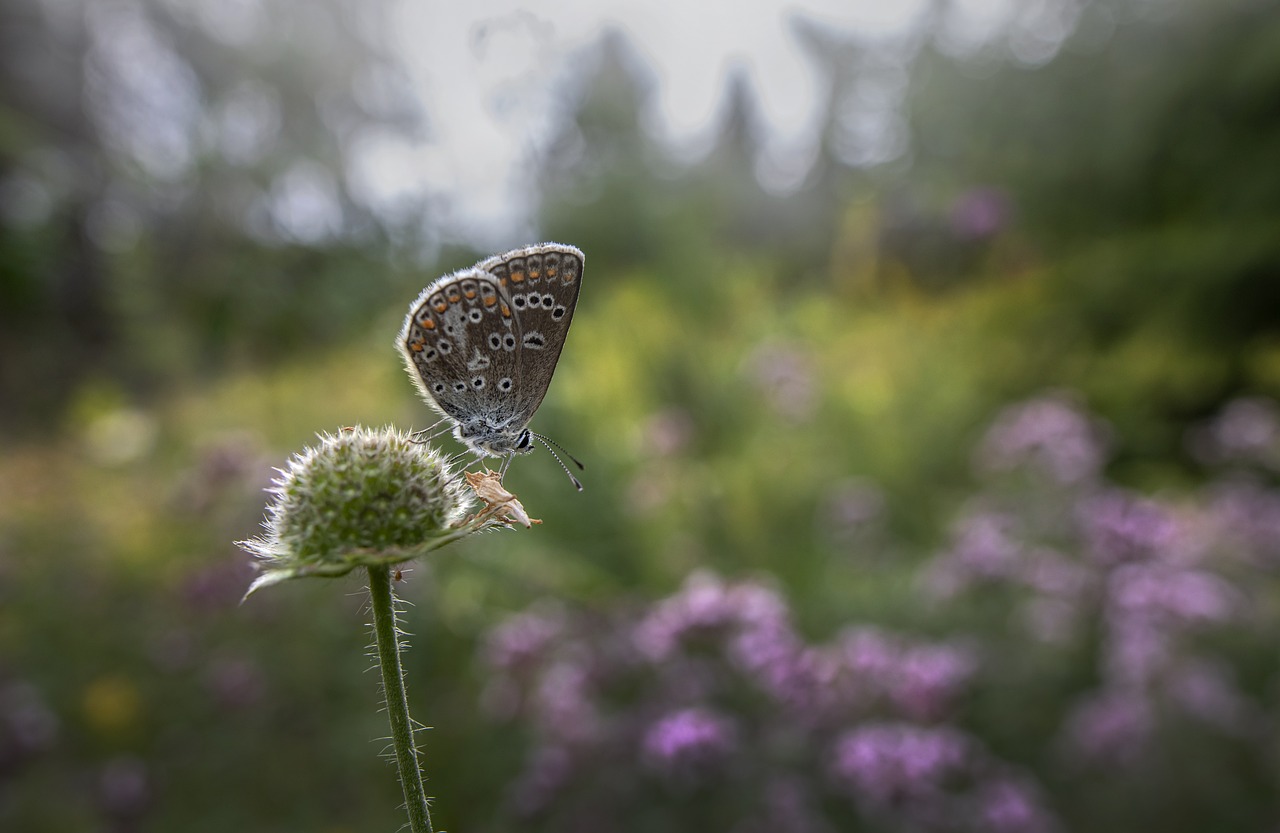The Brown Argus (Aricia agestis) is a small butterfly belonging to the family Lycaenidae. This species is noted for its subtle beauty and delicate wing patterns. Here’s an overview of Aricia agestis:
Appearance:
- Size: The wingspan ranges from 25 to 30 millimeters.
- Coloration: The upper side of the wings is brown with a slight purplish tint. The forewings and hindwings have orange spots near the edges, which are more prominent on the hindwings.
- Undersides: The underside of the wings is a light brown or grey with white-rimmed black spots and a series of orange spots along the edges, providing good camouflage when the butterfly is at rest.
Habitat:
- Preferred Habitats: The Brown Argus is typically found in dry, sunny habitats such as grasslands, heathlands, calcareous (chalk and limestone) grasslands, and coastal dunes.
- Geographic Range: This species is widely distributed across Europe, extending into parts of Asia. It is commonly found in southern and central Europe, but its range extends as far north as southern Scandinavia and the British Isles.
Behavior:
- Feeding: Adults feed on nectar from various flowers, including wild thyme, marjoram, and rockrose. They are particularly attracted to low-growing plants in sunny spots.
- Flight: The Brown Argus has a rapid and low flight pattern. It is typically active from late April to September, with two generations per year in warmer climates and one in cooler areas.
- Basking: These butterflies often bask in the sun with their wings open to absorb heat, which is essential for their activity.
Life Cycle:
- Eggs: Females lay eggs singly on the leaves of host plants. The eggs are white and dome-shaped.
- Larvae: The caterpillars are green with a darker green dorsal stripe and paler lateral lines. They feed on the leaves and flowers of various herbaceous plants, primarily from the genera Geranium (cranesbills) and Erodium (stork’s-bills).
- Pupation: Pupation occurs near the ground in leaf litter or low vegetation. The pupae are well-camouflaged, blending with their surroundings.
- Adults: Adults emerge after pupation and continue the cycle. In favorable conditions, there can be multiple generations in a year.
Ecological Role:
- Pollination: As nectar feeders, Brown Argus butterflies contribute to the pollination of various flowering plants.
- Food Web: The larvae and adults serve as prey for birds, spiders, and other insectivores, thus playing a role in the local food web.
Conservation Status:
- Population: The Brown Argus is not currently considered threatened and is relatively common in its preferred habitats.
- Threats: Habitat loss due to agricultural intensification, urban development, and climate change can impact local populations. Conservation efforts focus on preserving and managing suitable habitats.
Interesting Facts:
- Mimicry: The Brown Argus can be confused with the female Common Blue (Polyommatus icarus), as they share similar markings. However, the Brown Argus lacks the blue scales present in the Common Blue.
- Territoriality: Males are territorial and often patrol small areas, chasing away other males and potential predators.
- Larval Ant Associations: Like many Lycaenidae species, Brown Argus caterpillars have a mutualistic relationship with ants, which protect them from predators in exchange for sugary secretions produced by the larvae.
In summary, the Brown Argus (Aricia agestis) is a small, delicate butterfly that plays an important role in its ecosystem as both a pollinator and a food source for other animals. Its presence across various habitats in Europe and parts of Asia underscores its adaptability and ecological significance. Conservation efforts aimed at preserving grassland and heathland habitats will help ensure the continued success of this charming butterfly species.
Visited 203 times, 21 visit(s) today
Views: 367
Subscribe to the newsletter:
